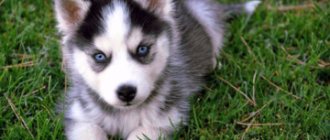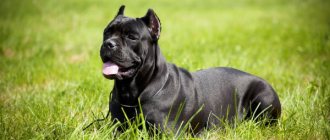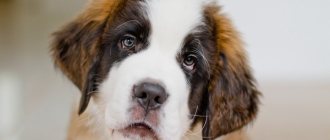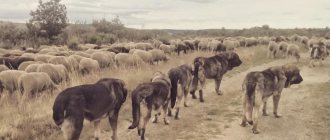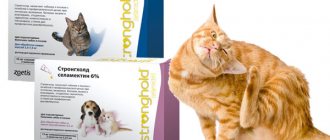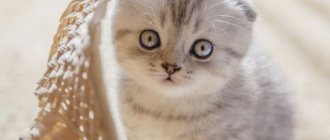Dachshund puppies belong to the hunting breed and in ancient times were favorites of the royal court due to their high intelligence. By nature, the dachshund is smart, sociable and inquisitive, and is classified as sanguine. The main feature is the hunting instinct and loud barking, which scares away intruders if they want to get into someone else's house. A dachshund puppy can please any owner. But in order for an animal to please its owner for many years and bring only positive emotions, you need to know the distinctive features of this breed.
Dachshund puppies belong to the hunting breed and in ancient times were favorites of the royal court due to their high intelligence
Description of the breed
The dachshund is valued not for its long legs, like a number of hound dogs, but for its speed, agility, lightness, and quick access to holes. A German breeder developed a unique breed adapted specifically for burrow hunting.
During the time of Bonaparte, many leaders of Tsarist Russia bred this particular breed. Depending on the size, weight, degree of endurance and adaptability to hunting, the dachshund has many varieties. What do dachshund puppies look like?
A typical dog of this breed has:
- cone-shaped elongated muzzle;
- strong jaws;
- correct bite;
- rather short legs;
- height from 13 to 27 cm;
- elongation of the tail;
- elongation of the body;
- muscular body;
- squinting eyes;
- balance of behavior;
- speed of reaction;
- courage;
- a tracker's keen sense of smell;
- squatness.
By nature, the dachshund is smart, sociable and inquisitive, and is classified as sanguine.
The dachshund is easy to train and is obedient. Most adapted for burrow hunting and tracking prey.
Vaccinations
Dachshund puppies are susceptible to various infectious diseases, so vaccination is carried out according to standard rules. The first vaccination is given at 1.5 two months, the second after 3-5 weeks.
Before this, the dachshund puppy is given an anthelmintic drug in the form of a suspension or tablets twice with an interval of 10-14 days. After about 10 days, the first vaccination is given, and rabies vaccination is often added to the second.
Important: Each drug manufacturer may have its own vaccination and preparation schedule. Supervision and consultation of a veterinarian is required.
Breed standards
Today, the rabbit dachshund is in demand for its genuine optimism. It is rare, but there are puppies of non-standard color in case of mixing of blood lines. Dachshunds mature quickly and are already considered fully formed adults at 6 months. Often they begin to suffer quite early from diseases of the spinal column or paralysis of the hind legs.
The weight of a miniature dachshund puppy is 4-5 kg, a standard one - 9-13 kg. A baby's weight at 2 months is 2-3 kg in life. Dachshund (3 months) - 3 kg. Chest circumference is:
- standard dachshund - 3-5 cm;
- miniature - up to 3-7 cm;
- rabbit - up to 25 cm.
Selecting a dachshund by size
The easiest way to distinguish is the standard type. These puppies are large, with strong bones and a large chest girth.
They always look at the parents first. Standard ones have a better chance of producing offspring of similar size.
Miniature dachshunds give birth to "rabbits" and "dwarfs", but there are exceptions if a large dog has the corresponding gene.
There is little difference in small dogs. Rabbit and miniature dachshunds grow at about the same rate. By 8-9 months it will become clear what type the puppy is.
They are often identified as rabbits, but the difference in chest circumference with dwarfs is up to 1 cm. To avoid confusion, official measurements are taken upon reaching 15 months.
Gallery: dachshund puppies (25 photos)
Breed differences
It is important to understand that this is a hunting dog with high activity, an interest in tracking minks from birth, and an unwillingness to yield to other dogs.
The main features of the breed include:
- preference to stay near water, which the owner should take into account when walking the dog;
- seriousness;
- intelligence, keen sense of smell;
- mobility from the first months of life;
- excessive playfulness in children, speed of reaction when starting to play with children.
The dachshund is capable of setting up ambushes, but at the same time it is a very domestic animal, capable of quickly making friends from the first days of being in the house with all family members. The puppy will immediately begin to consider himself the leader of the pack, follow on the heels of the owner and immediately notify by barking if someone is suddenly about to leave.
The Dachshund does not tolerate loneliness and will whine if left alone in the house for a long time. It’s good to take your dog with you on vacation, to your dacha, fishing, and just to walk along the river bank more often. Leaving a puppy at home alone is the harshest punishment and can make him very upset.
Origin story
Even in Egyptian cave paintings, a dog similar to a dachshund was depicted in all its glory; finds and mentions of this are in historical museums. This means that this is an ancient breed that has been loved and respected for a long time.
Although the hunting breed is not famous for its long legs like hound dogs, it is no less fast and agile. She will easily overtake any animal, and if it climbs into a hole, she will take out a trophy and present it to the owner.
The dachshund has no equal in burrow hunting for rodents. Previously, when it was expensive to own a pack of hounds, and such a privilege was enjoyed by the rich, dachshunds were owned by amateur hunters or self-sufficient people.
The weight and height of hound breeds was great, and keeping such an animal was also expensive. German breeders set to work, trying to reduce their size and create a unique breed capable of burrow hunting.
As a result of all these experiments, in the 16th century, such a breed as the “hunting marriage” was born. Its short legs were initially considered a defect, but after looking at the results of their work in practice, they began to carry out breeding selections to improve the quality of this breed.
Marriages a few years later began to be called dachshunds, and their standard was established in 1870. Today there are many dachshund standards in each country, one of them is adopted by the London Kennel Club, and the other by the FCI in Russia.
While the formation and standard of the breed was taking place, dachshunds changed their size, height and weight. They became more elongated and short-legged. The breed was depicted in artists' drawings, and famous people, such as Napoleon Bonaparte and many Russian figures, got dachshunds as life companions.
This is the first breed that has many varieties, dachshunds are divided by size, weight, and they also differ in the length of the coat and the animal, endurance and hunting ability.
Selection instructions
When choosing, you should pay attention to the appearance of the dachshund. She must have:
- wedge-shaped elongated head;
- pronounced brow ridges;
- White teeth;
- slanted brown eyes;
- thin floppy ears;
- short front legs;
- hind legs spread apart;
- shoulder strength;
- a rather long tail with its tapering towards the tip.
Dachshund - features of the breed
The dachshund is an ancient breed bred to hunt fur-bearing animals. The peculiarity of the breed is that it works in a hole, deep underground. The elongated physique allows the dog to thoroughly occupy the passage into the hole without getting stuck. Despite their modest dimensions, representatives of the breed have powerful jaws, are resilient and physically strong.
Note! The Dachshund breed is divided into three types: standard, medium and small (rabbit). Dachshunds also come in different coat types: long-haired, short-haired and wire-haired.
Features of the breed that the future owner should know are possible health problems. If the dachshund puppy is raised incorrectly, the chest is not formed correctly, and problems with the spine and obesity may begin.
What to feed puppies?
Of course, before you feed your dachshund, you need to talk to the breeders. It is worth accustoming a puppy to certain foods gradually, starting from 2-3 weeks. You can gradually introduce food into the diet, adhering to the feeding schedule:
- at 4-5 months - 4 times a day;
- at 5-6 months - 2-3 times a day;
- after six months - 2 times a day.
Starting from 4 months, you can give your babies boiled foods, baby meat puree or food, hard-boiled eggs, stewed vegetables, rice and buckwheat porridge, baby yogurt. You can give your favorite bone to chew on, but you shouldn’t indulge in sausages, pizza, kebabs, salted, fried and smoked food. You cannot overfeed your dachshund. If you give dry food, you should always place a bowl of water nearby. Uneaten food should be removed immediately. If the dog quickly begins to gain weight, this will indicate that the feeding process is selected correctly. If a dog eats little and reluctantly, this should alert you.
Vitamins and supplements in the diet of a dachshund puppy
Regardless of the type of diet, a Dachshund puppy needs vitamins and supplements before changing teeth. From 8–9 months, if the puppy eats high-quality ready-made food, vitamin complexes are not needed. With the natural type of feeding, vitamins are given on an ongoing basis until the age of one, and in courses from the age of one.
Natural vitamin supplements:
- Gelatin and boiled cartilage.
- Meat and bone meal.
- Clean, dried, crushed egg shells.
- Bran.
- Fish, chicken, beef liver.
- Greens, vegetables, fruits.
- Sunflower oil, olive oil.
- Brewer's yeast.
In addition to natural sources of nutrients, your dachshund puppy should be given pharmaceutical vitamin supplements:
- Fish fat.
- Feed tricalcium phosphate.
- Omega-3, Omega-6.
- B vitamins.
- Undevit and analogues.
Advice: if the above lists scare you a little, purchase industrial vitamin complexes for your pet according to age.


